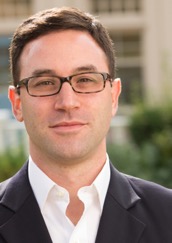Increasingly, there is greater awareness that college students have high levels of clinically significant emotional problems, and despite a broad consensus about the need to clarify the scope of the problem and develop actionable solutions, our understanding of college student mental health remains limited. Toward addressing this gap, the WHO World Mental Health International College Student Initiative(WMH-ICS) has sought to: (i) obtain epidemiological data among college students worldwide, (ii) clarify potential mental health treatment barriers, (iii) implement internet-based prevention and other treatment programs for mental disorders, and (iv) disseminate evidence about effective interventions.
In our recently published study in Journal of Abnormal Psychology(Auerbach et al., 2018a), we addressed the first phase of the WMH-ICS by presenting data on the prevalence of common mental disorders (major depressive disorder (MDD), generalized anxiety disorder (GAD), panic disorder, broad mania, alcohol use disorder, and substance use disorder) and determining if these disorders were concentrated in certain subgroups of first-year students. We used data from the initial round of WMH-ICS surveys administered to 14,371 students in 19 colleges and universities across eight mostly high-income countries (Australia, Belgium, Germany, Mexico, Northern Ireland, South Africa, Spain, and United States).
Several important findings emerged. First, approximately one-third of first-year students report 12-month (31.4%) and lifetime (35.3%) mental disorders, and most of these disorders have onsets during middle adolescence. Not surprisingly, MDD (21.2%) and GAD (18.6%) are the most common lifetime disorders. Second, the study examined a wide range of socio-demographic (e.g., gender, parental education) and college-related (e.g., most important reason obtaining a college education) correlates and found that mental disorders are widely distributed among college students defined on the basis of these characteristics, underscoring the urgency of developing clinical outreach strategies for students with diverse needs. One notable exception was that students identifying as non-heterosexual and engaging in same-sex behaviors reported a 3.4 elevated likelihood (relative to heterosexual students with no same-sex attraction) of mental disorders. Third, in a follow-up paper with the same sample (see Auerbach et al., 2018b), we developed multivariate comorbid mental disorder profiles using latent class analysis and found four primary classes: (i) high comorbidity (1.9%; four or more 12-month disorders), (ii) internalizing-externalizing comorbidity (5.8%), (iii) internalizing comorbidity (14.6%), and pure disorders (16.1%; only presenting with one 12-month disorder). Similar to our earlier analyses of socio-demographic correlates, sexual minority status was associated with high comorbidity. Last, using the same mental disorder profiles to determine risk for suicidal behaviors, we found that students with high comorbidity had a 7.3 elevated likelihood of making a suicide attempt among students with suicide ideation. This result has challenging clinical implications, as it indicates that transdiagnostic interventions directed at students with high comorbidity will be needed to reduce suicidal behaviors among students at risk by virtue of having suicide ideation.
These are sobering statistics, particularly when considering that mental disorders among college students contribute to lower grades (Bruffaerts et al., 2018), higher rates of school attrition (Auerbach et al., 2016), significant role impairment (e.g., dysfunctional peer relations, inability to attend class; Alonso et al., 2018), and the occurrence of suicidal thoughts and behaviors (Mortier et al., 2018). Our data suggest that only a minority of college students in need of treatment utilize mental health resources (Bruffaerts et al., 2019) and that only 25% of other students say they would seek treatment for emotional problems if such problems occurred. Students who did not seek treatment said that they preferred to handle emotional problem alone or by talking with friends or relatives (Ebert et al., in press).
In light of the high rates of mental disorders and low rates of mental health treatment among college students, we have to ask: How can mental health outcomes improve on college campuses?There is no easy answer to this question. However, our cross-national data suggest that a multi-pronged approach will be needed. Given that the composition and resources within each college and community vary immensely, it is critical that the magnitude and nature of the problem is defined through carefully surveying the student population. Once the problem is defined, institutions then need to determine the best way to distribute clinical resources, bearing in mind that most counseling centers are already working at capacity in spite of the fact that the vast minority of students in need of services do not seek out treatment. This means that any outreach efforts need to occur in the context of a plan to develop complementary campus treatment resources, which might range from greater institutional backing of peer support programs to the use of internet- and app-based treatments.
Given the importance of college students for the success and growth of a country, there is a great deal hanging in the balance of future initiatives along these lines. It is our hope that the WMH-ICS will be able to help institutions of higher education grapple with these challenges by sharing experiences on best practices as our program of research grows.
Discussion Questions
- Why are college students experiencing high rates of mental disorders, and what are the barriers to access treatment?
- What are complementary strategies to facilitate greater access to treatment on college campuses?
Biography
 Randy P. Auerbach, Ph.D., ABPP is an Associate Professor in the Department of Psychiatry at Columbia University and Division of Clinical Developmental Neuroscience at the Sackler Institute. Additionally, he serves as Co-Director for the WHO World Mental Health International College Student Initiative. His research is multidisciplinary and utilizes a multimodal approach for assessment (e.g., real-time passive sensor monitoring, electroencephalography, and magnetic resonance imaging) to determine why depressive symptoms unfold, how self-injurious and suicidal behaviors develop, and what changes in the brain during treatment. This work is funded by grants from the National Institute of Mental Health, the Klingenstein Third Generation Foundation, the Dana Foundation: Clinical Neuroscience Research Grant, and several private foundations, and to date, it has resulted in over 120 published scientific papers and book chapters.
Randy P. Auerbach, Ph.D., ABPP is an Associate Professor in the Department of Psychiatry at Columbia University and Division of Clinical Developmental Neuroscience at the Sackler Institute. Additionally, he serves as Co-Director for the WHO World Mental Health International College Student Initiative. His research is multidisciplinary and utilizes a multimodal approach for assessment (e.g., real-time passive sensor monitoring, electroencephalography, and magnetic resonance imaging) to determine why depressive symptoms unfold, how self-injurious and suicidal behaviors develop, and what changes in the brain during treatment. This work is funded by grants from the National Institute of Mental Health, the Klingenstein Third Generation Foundation, the Dana Foundation: Clinical Neuroscience Research Grant, and several private foundations, and to date, it has resulted in over 120 published scientific papers and book chapters.
 Ronald C. Kessler, Ph.D. is the McNeil Family Professor of Health Care Policy at Harvard Medical School and Co-Director of the WHO, World Mental Health International College Student Initiative. He is a psychiatric epidemiologist whose research deals broadly with the prevalence, psychosocial risk factors, and consequences of common mental disorders in the general population and with the evaluation of diverse large-scale interventions for these disorders. Dr. Kessler is the only psychiatric epidemiologist ever elected to the National Academy of Science and also is a member of the National Academy of Medicine. He has been ranked for many years by ISI as the most widely-cited researcher in the world in psychiatry and psychology.
Ronald C. Kessler, Ph.D. is the McNeil Family Professor of Health Care Policy at Harvard Medical School and Co-Director of the WHO, World Mental Health International College Student Initiative. He is a psychiatric epidemiologist whose research deals broadly with the prevalence, psychosocial risk factors, and consequences of common mental disorders in the general population and with the evaluation of diverse large-scale interventions for these disorders. Dr. Kessler is the only psychiatric epidemiologist ever elected to the National Academy of Science and also is a member of the National Academy of Medicine. He has been ranked for many years by ISI as the most widely-cited researcher in the world in psychiatry and psychology.
References
Alonso, J., Mortier, P., Auerbach, R. P., Bruffaerts, R., Vilagut, G., Cuijpers, P., Demyttenaere, K., Ebert, D. D., Ennis, E., Gutiérrez-Garcia, R. A., Green, J. G., Hasking, P., Lochner, C., Nock, M. K., Pinder-Amaker, S., Sampson, N. A., Zaslavsky, A. M., Kessler, R. C., & WHO WMH-ICS Collaborators. (in press). Severe role impairment associated with mental disorders: Results of the WHO World Mental Health Surveys International College Student project. Depression and Anxiety.
Auerbach, R. P., Alonso, J., Axinn, W. G., Cuijpers, P., Ebert, D., Green, J. G., Hwang, I., Kessler, R. C., Liu, H., Mortier, P., Nock, M. K., Pinder-Amaker, S., Sampson, N., Aguilar-Gaxiola, S., Al-Hamzawi, A., Andreade, L. H., Benjet, C., Caldas-de-Almeida, J. M., Demyttenaere, K., Florescu, S., de Girolamo, G., Gureje, O., Haro, J. M., Karam, E., Kiejna, A., Kovess-Masfety, V., Lee, S., McGrath, J., O’Neill, S., Pennell, B.E., Scot, K., ten Have, M., Torres, Y., Zarkov, Z., & Bruffaerts, R. (2016). Mental disorders among college students in the WHO World Mental Health Surveys. Psychological Medicine, 46, 2955-2970.
Auerbach, R. P., Mortier, P., Bruffaerts, R., Alonso, J., Benjet, C., Cuijpers, P., Demyttenaere, K., Ebert, D. D., Green, J. G., Hasking, P., Murray, E., Nock, M. K., Pinder-Amaker, S., Sampson, N. A., Stein, D. A., Vilagut, G., Zaslavsky, A. M., Kessler, R. C., & WHO WMH-ICS Collaborators. (2018a). The WHO World Mental Health Surveys International College Student project: Prevalence and distribution of mental disorders. Journal of Abnormal Psychology, 127, 623-638.
Auerbach, R. P., Mortier, P., Bruffaerts, R., Alonso, J., Benjet, C., Cuijpers, P., Demyttenaere, K., Ebert, D. D., Green, J. G., Hasking, P., Lee, S., Lochner, C., McLafferty, M., Nock, M. K., Petukhova, M. V., Pinder-Amaker, S., Rosellini, A. J., Sampson, N. A., Vilagut, G., Zaslavsky, A. M., Kessler, R. C., & WHO WMH-ICS Collaborators. (2018b). Mental disorder comorbidity and suicidal thoughts and behaviors in the World Health Organization World Mental Health Surveys International College Student initiative. International Journal of Methods in Psychiatric Research, e1752.
Bruffaerts, R., Mortier, P., Auerbach, R. P., Alonso, J., Benjet, C., Cuijpers, P., Demyttenaere, K., Ebert, D. D., Green, J. G., Hasking, P., Hasking, P., Stein, D., Ennis, E., Nock, M. K., Pinder-Amaker, S., Sampson, N. A., Vilagut, G., Zaslavsky, A., & Kessler, R. C. (2019). Lifetime and 12-month treatment for mental disorders and suicidal thoughts and behaviors among first year college students. International Journal of Methods in Psychiatric Research, e1764.
Bruffaerts, R., Mortier, P., Kiekens, G., Auerbach, R. P., Cuijpers, P., Demyttenaere, K., Green, J. G., Nock, M. K., & Kessler, R. C. (2018). Mental disorders in college freshmen: Prevalence and academic functioning. Journal of Affective Disorders, 225, 97-103.
Ebert, D. D., Mortier, P., Kaehlke, F., Baumeister, H., Auerbach, R. P., Alonso, J., Bantjer, J., Benjet, C., Cuijpers, P., Kuechler, A.-M., Green, J. G., Hasking, P., O’Neill, S., Pinder-Amaker, S., Sampson, N. A., Vilagut, G., Bruffaerts, R., & Kessler, R. C. (in press). International Journal of Methods in Psychiatric Research.
Mortier, P., Auerbach, R. P., Alonso, J., Bantjes, J., Cuijpers, P., Ebert, D. D., Green, J. G., Hasking, P., Nock, M. K., O’Neill, S., Pinder-Amaker, S., Sampson, N., Vilagut, G., Zaslavsky, A. M., Bruffaerts, R., Kessler, R. C., & WHO WMH-ICS Collaborators. (2018). Suicidal thoughts and behaviors among first-year college students: Results from the WMH-ICS Project. Journal of the American Academy of Child and Adolescent Psychiatry, 57, 263-273.
